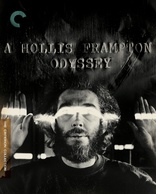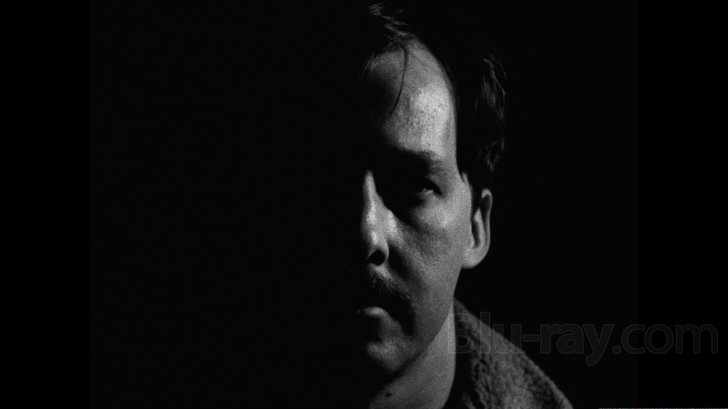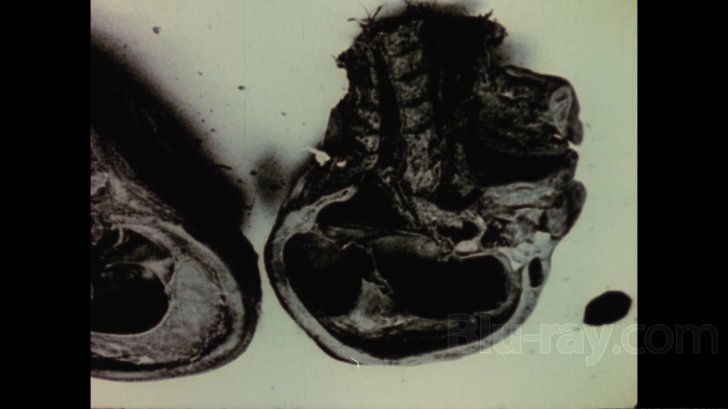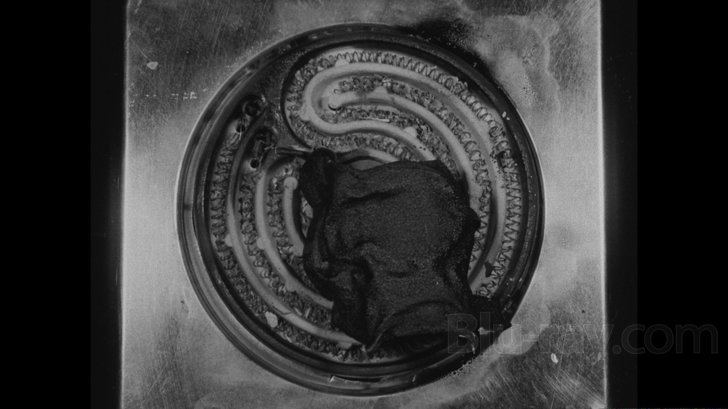A Hollis Frampton Odyssey Blu-ray Movie
HomeA Hollis Frampton Odyssey Blu-ray Movie 
Criterion | 1966-1979 | 268 min | Not rated | Apr 24, 2012
Movie rating
7.4 | / 10 |
Blu-ray rating
| Users | 4.0 | |
| Reviewer | 4.0 | |
| Overall | 4.0 |
Overview
A Hollis Frampton Odyssey (1966-1979)
An icon of the American avant-garde, Hollis Frampton made rigorous, audacious, brainy, and downright thrilling films, leaving behind a body of work that remains unparalleled. In the 1960s, having already been a poet and a photographer, Frampton became fascinated with the possibilities of 16 mm filmmaking. In his radically playful and visually and sonically arresting works, Frampton repurposes cinema itself, making it into something by turns literary, mathematical, sculptural, and simply beautiful—and always captivating.
Director: Hollis Frampton| Surreal | Uncertain |
| Short | Uncertain |
| Other | Uncertain |
Specifications
Video
Video codec: MPEG-4 AVC
Video resolution: 1080p
Aspect ratio: 1.34:1
Original aspect ratio: 1.33:1
Audio
English: LPCM Mono
Subtitles
None
Discs
50GB Blu-ray Disc
Single disc (1 BD)
Playback
Region A (locked)
Review
Rating summary
| Movie | 4.0 | |
| Video | 4.5 | |
| Audio | 4.5 | |
| Extras | 4.5 | |
| Overall | 4.0 |
A Hollis Frampton Odyssey Blu-ray Movie Review
Reviewed by Dr. Svet Atanasov May 8, 2012"A Hollis Frampton Odyssey" arrives on Blu-ray courtesy of Criterion. The supplemental features on the disc include excerpts from an interview with Hollis Frampton conducted by filmmaker Adele Friedman for the Video Databank at the School of the Art Institute of Chicago; performance piece by Hollis Frampton; and a gallery of works by Hollis Frampton from his seventy-piece xerographic series By Any Other Name. The disc also arrives with an illustrated booklet featuring an introduction by film critic Ed Halter and essays and capsules on the films by Hollis Frampton by scholars Ken Eisenstein, Bruce Jenkins, and Michael Zryd. Region-A "locked".

Perceptions
American avant-garde legend Hollis Frampton completed approximately one hundred films. The majority of them are united by concepts and structures that were introduced by the sciences as well as Frampton’s evolving attitude towards mass culture, art and technology.
Criterion’s A Hollis Frampton Odyssey features a total of twenty four films, dating from 1966-1979. The films were selected by film preservationist Bill Brand and Frampton scholars Bruce Jenkins and Michael Zryd. Frampton’s former partner, Marion Faller, was also consulted. On the disc, the films are divided into four categories, and most of them come with short remarks and comments by the filmmaker.
Early Films (1966-1969) - these films were completed after Frampton moved to New York City in 1958. They were shot with a 16mm camera over a period of eight years.
Manual of Arms (1966) – a chaotic collection of faces belonging to some of Frampton’s friends. Silent. (18 min, 1080p).
Process Red (1966) - colored and black and white close-ups of moving hands. Silent. (4 min, 1080p).
Maxwell’s Demon (1968) - repetitive movements by a man interrupted by color splashes. The film was dedicated to Scottish physicist James Clerk Maxwell. Monaural. (4 min, 1080p).
Surface Tension (1968) - a short film, in three parts, about a man planning to shoot a film. The second part is an ultra fast trip through the streets of New York City. Monaural. (10 min, 1080p).
Carrots & Peas (1969) - forms, structures, relationships and language are examined with a sense of humor. Monaural. (6 min, 1080p).
Lemon (1969) - a one-shot experimental film dedicated to painter Robert Huot. With an optional audio commentary by Hollis Frampton excerpted from a 1977 interview recorded for the television series Screening Room with Robert Gardner. Silent. (8 min, 1080p).
Zorns Lemma (1970) - named after a set theory introduced by mathematician Max Zorn in 1935, the film is comprised of long series of street names, product labels, advertising signs, billboard art and landscape shots. Here, the images are as important as the actual order in which they appear. The relationships between the images as well as the logic behind their organization, however, are not easy to analyze and comprehend. The only clear message is that the act of creating could be an uneven, often frustratingly chaotic process. Zorns Lemma was the first feature-length avant-garde work to be screened at the New York Film Festival. Monaural. (60 min, 1080p).
Films From Hapax Legomena (1971-72) - a seven-film cycle which includes the following shorts: nostalgia (1971), Poetic Justice (1972), Critical Mass (1971), Traveling Matte (1971), Ordinary Matter (1972), Remote Control (1972), and Special Effects (1971-72). The cycle underscores Frampton's background in poetry and still photography. In comparison with Zorns Lemma, here movement and tempo are clearly better controlled. However, the repetition form is retained. Criterion have included three of the seven films in the cycle:
(nostalgia) – narrated by artist Michael Snow. Monaural. (37 min, 1080p).
Poetic Justice - Silent. (32 min, 1080p).
Critical Mass - Frampton's first attempt at working with actors and using sync sound. Monaural. (26 min, 1080p).
Films From Magellan (1972-1984) - Frampton worked on this massive unfinished project until his death in 1984. His intention was to create a cycle of thirty-six hours of film to be screened over the course of 371 days. Unfortunately, Frampton completed only approximately eight hours of the intended thirty-six.
The Magellan cycle is broken into three large phases:
The Birth of Magellan - one of initially planned fourteen Cadenza films to be used as a prelude to the Magellan cycle. The film incorporates mixed footage from an unknown wedding and the early film A Little Piece of String (1902). Monaural. (6 min, 1080p).
Straits of Magellan - a collection of one-minute films, or Pans, which were intended to be interspersed throughout Straits of Magellan. Initially, Frampton planned to produce 720 of them. The repetition form again appears to be the key element uniting these short films. Some of the shorts included here also make up other cycles by Frampton, such as Winter Solstice (33 min), which was part of the cycle SOLARIUMAGELANI (1974). (Please be warned that one of the films is extremely graphic. It shows a man cutting the head of a dead animal using a small knife). Total running time: 53 minutes (1080p).
-- Day 000 = 1 Jan: Pan 0 and Pan 1
-- Day 000 = 1 Jan: Ingenvm Nobis Ipsa Pvella Fecit, Part I
-- Day 000 = 1 Jan: Magellan: At The Gates of Death, Part I: The Red Gate I, O
-- Day 000 = 1 Jan: Pan 2
-- Day 001 = 2 Jan: Pan 3 and Pan 4
-- Day 354 = 20 Dec: Pan 697 and Pan 698
-- Day 355 = 21 Dec: Winter Solstice
-- Day 356 = 22 Dec: Pan 699 and Pan 700
The Death of Magellan - Gloria! was intended to be one of the final films in the Magellan cycle. It was completed in 1979, and it was the first film in which Frampton used a computer. Like The Birth of Magellan,Gloria! also uses footage from early silent films (two short comedies).
-- Day YYY = 3 Jan: Gloria!. Monaural. (10 min, 1080p).
A Hollis Frampton Odyssey Blu-ray Movie, Video Quality 

The following text appears inside the booklet provided with Criterion's A Hollis Frampton Odyssey:
"These new high-definition digital transfers were created on a Spirit 2K Datacine from original 16mm A/B/C/D rolls, internegatives, and prints.
Telecine supervisors: Bill Brand, Lee Kline.
Colorist: Alex Berman/Prime Focus, New York. "
As far as I am concerned, the new transfers Hollis Frampton's films have received look outstanding. The quality of the short films where obvious
manipulations have not been performed by the filmmaker, for example, matches that of some of the best releases of 16mm films found in
Criterion's catalog (see the strong definition and evenly distributed grain in screencapture #4). Color reproduction is also convincing, though
obviously it is next to impossible to talk about consistency as so many of the short films have manipulated color designs. Many of the black and
white short films, however, look terrific in 1080p (see screencapture #19). This said, occasionally there a few tiny flecks that pop up here and
there as well as small scratches (see screencapture #2), but they are never distracting. There are no purely transfer-specific anomalies to report
in this review. (Note: This is a Region-A "locked" Blu-ray disc. Therefore, you must have a native Region-A or Region-Free PS3 or SA in
order to access its content).
A Hollis Frampton Odyssey Blu-ray Movie, Audio Quality 

There is only one audio track on this Blu-ray disc: English LPCM 1.0. For the record, there are no optional English subtitles for the films where
narration is used. Also, there are no optional English subtitles for the short remarks by Hollis Frampton included with some of the films.
The following text appears inside the booklet provided with Criterion's A Hollis Frampton Odyssey:
"The original monaural soundtracks were remastered at 24-bit from original optical and magnetic tracks. Clicks, thumps, hiss, and hum were
manually removed using Pro Tools HD. Crackle was attenuated using AudioCube's integrated workstation."
Wherever there is sound, I assume that the lossless track provides as much depth as possible. The lack of obvious distortions (not intended by
the filmmaker), audio dropouts, or background hiss certainly points to the fact that Criterion have optimized the audio as best as possible.
A Hollis Frampton Odyssey Blu-ray Movie, Special Features and Extras 

- Hollis Frampton Interview - excerpts from an interview with Hollis Frampton conducted by filmmaker Adele Friedman for the Video Databank at the School of the Art Institute of Chicago in 1978. The director explains how he became interested in art, talks about the years he spent in New York, the influence other photographers had on him, etc. In English, not subtitled. (21 min, 1080i).
- A Lecture - an audio portion from a performance piece by Hollis Frampton, recorded in 1968 at Hunter College in New York City and featuring the voice of artist Michael Snow. The script for the piece, with instructions, could be accessed at Criterion's website. In English, not subtitled. (23 min, 1080i).
- By Any Other Name - a gallery of works by Hollis Frampton from his seventy-piece xerographic series By Any Other Name (1979-1983). (1080p).
- Booklet - 44-page illustrated booklet featuring an introduction by film critic Ed Halter and essays and capsules on the films by Hollis Frampton by scholars Ken Eisenstein, Bruce Jenkins, and Michael Zryd.
A Hollis Frampton Odyssey Blu-ray Movie, Overall Score and Recommendation 

I found the majority of the films in this fascinating release to be very difficult to deconstruct. Without the necessary knowledge to understand their structure and purpose, viewing them could be a rather frustrating experience. Fortunately, Criterion have included an excellent booklet with outstanding writings on the films that could be very helpful if one isn't familiar with the works of Hollis Frampton. So, while A Hollis Frampton Odyssey is certainly a great release, it is also a very challenging one, which is why I think that most viewers curious about it should find a way to rent it first before considering a purchase. Fans of Hollis Frampton and experimental cinema should not hesitate to pick it up. RENT IT.
Similar titles
Similar titles you might also like

By Brakhage: An Anthology, Volume Two
1955-2003

By Brakhage: An Anthology, Volume One
1954-2001

A Safe Place
1971

3 Women
1977

Meditation on Violence
1949

At Land
1946

The Big Shave
included with "Scorsese Shorts" release
1967

Masterworks of American Avant-Garde Experimental Film 1920-1970
1920-1970

The Last Movie
1971

Naked Lunch
1991

My Way Home
1978

Zéro de conduite
Zero for Conduct
1933

Affirmations
1990

The King of Marvin Gardens
1972

Italianamerican
included with "Scorsese Shorts" release
1974

Non, Je Ne Regrette Rien (No Regret)
1993

Five Easy Pieces
1970

Paris, Texas 4K
1984

Faces
1968

Winter Wind
Sirokkó
1969